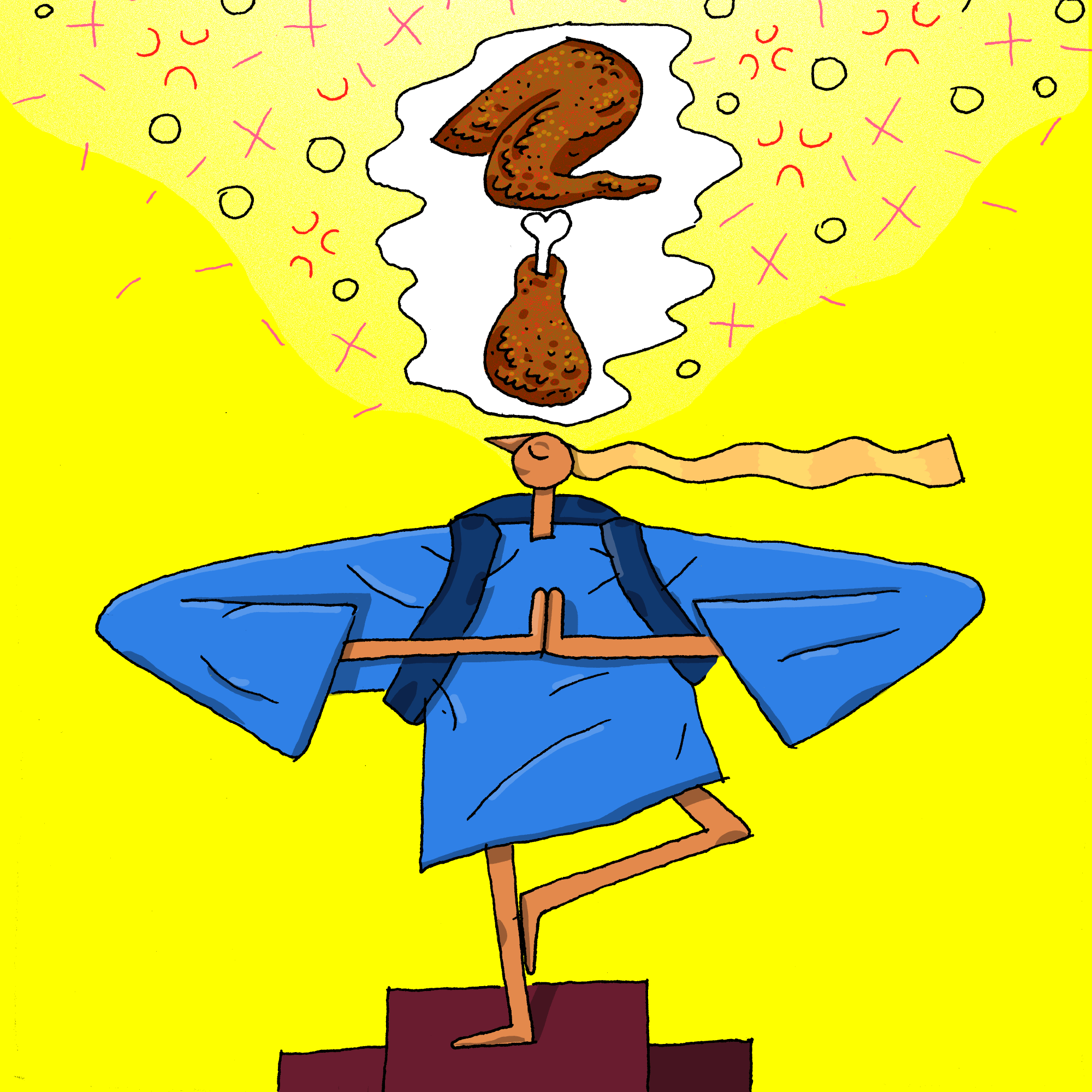
From Emeril to Oprah, celebrities have lined up to endorse the air fryer. But what is an air fryer, and what can it do that your oven can’t?
Sometime between the moment I became aware of the air fryer’s existence and the moment I plunged half a dozen raw chicken wings into the bowels of the air fryer I purchased off the Internet, I began believing in the potentially life-altering powers of the air fryer. I love chicken wings and French fries and mozzarella sticks almost as much as I love the idea of not getting heart disease—and that naive love allowed the air fryer, and my desire to not die in my 50s, to engage in an unholy union of optimism and trepidation.
Air fryers have existed since at least 2010, when Philips introduced what it coined “Rapid Air Technology”—which after weeks of reporting and testing (and testing my patience) I found out is just another way of saying “Hey, there’s a fan inside this box that blows hot air over your chicken wings.” But Rapid Air Technology didn’t capture our collective imagination until celebrity chefs like Emeril Lagasse and Gordon Ramsay (talk about hot air, amirite?!) started hawking them on QVC and YouTube. Philips, which is the biggest name in the air fryer game, claims to have sold more than 7 million units since the product’s conception.
The hard sell was on. Emeril bragged on QVC that his brand’s air fryer could make, get this, a chocolate soufflé. (To Emeril’s credit, he did produce a chocolate soufflé from the air fryer’s cook drawer, but I’ve got to believe that the magic of television played a role there.) And in an ad campaign featuring Ramsay, Philips hyperbolized that its air fryer was as invaluable as a real, flesh-and-blood sous chef. In 2016, the air fryer even made Oprah’s famous Favorite Things list. And as we’re wont to do once a lovable celebrity chef—or Oprah—cosigns on a product, we swallowed it all whole. But why? From my reporting, I can point to a combination of shrewd marketing tactics, questionable health claims, good timing, and society’s willingness to suspend reality a bit in its quest to find the perfect home cooking gadget.

Air fryers were capable of preparing your favorite crunchy, crispy fried foods—chicken wings, French fries, mozzarella sticks—while using a tablespoon of oil or less (according to Philips, anyway). Big Air Fryer promised its apostles trimmer waistlines and better blood pressure readings, all while retaining the ability to throw the best goddamn Super Bowl party Everytown USA has ever seen. We could eat as much fried food as we’d like without worrying about burning our homes to the ground. Air fryers promised to be the biggest culinary boon since Ron Popeil told us all to “set it and forget it.”
If you have no idea what an air fryer looks like—its shape, its scale—picture something between a bathroom-sized trash can and a rice cooker. Now imagine that trash can has a drawer, and that the drawer is filled with raw chicken parts. Close the drawer, set the temperature dial (it ranges from 180 to 390 degrees), set the timer (it goes up to 30 minutes), and wait as all that hot air blows all that raw chicken to golden, crispy perfection. At least, that’s what Emeril and Gordon and the Internet said was supposed to happen. But the reality is a bit different.
The air fryer I bought—a Utopia Kitchen model for $49.99—came with a combination instruction manual/recipe pamphlet. Included in the instructions were helpful tips like “don’t put your face too close to the cooking drawer” (close is fine, but too close is a big no-no) and “do not let children play with the socket or the plug.” Utopia Kitchen’s copywriter wanted to ensure that users knew the air fryer wasn’t a deep fryer—”Do not fill the drawer with oil, otherwise it may cause a fire”—and that by no means should the product be submerged in water, especially while plugged in and turned on.
After carefully heeding all of this safety advice, I decided to make some hot wings.
Predictably, there was a recipe for wings in the recipe pamphlet that came with my air fryer. As instructed, I tossed the wings in a mixture of olive oil, cumin, salt, and pepper, set the temperature to 390 degrees Fahrenheit, set the timer for 20 minutes, and popped the raw chicken into the cook drawer. I whipped together a glaze of sriracha, soy sauce, and mayonnaise, and waited for my wings to fry. By air. Very hot air.

Printed in the user manual was a note to never, ever open the cook drawer while the air fryer was doing its thing—doing so might lead to a third-degree burn on one’s face or, worse, certain death. This presented a problem: I wasn’t able to monitor the interior temperature of the wings. And because I couldn’t trust the veracity of the machine’s temperature dial, I had no idea if “cook for 20 minutes” was a reliable instruction. Afraid to defy the rules set forth by the creators of the latest addition to my countertop, I left the wings to cook. Which is to say, I left the wings to dehydrate. When I opened the drawer, the skin was wrapped taut to the meat and bones and appeared brittle and cracked—a far cry from the golden, crispy, juicy wings I was promised.
I hoped the glaze would resurrect the wings, but they were leathery and dry. They tasted just as they would have tasted if they’d been overcooked in a conventional oven, which is because air fryers are precisely that: a countertop, R2D2-looking version of something you probably already have. The promise of healthy, though crispy, hot wings wouldn’t have been betrayed if I had cooked them in my conventional oven because I could have safely opened the door to my conventional oven to monitor the internal temperature of the wings; if I opened the drawer on my air fryer, the instruction manual suggested I might be burned alive.
I tried to eat the wings—three chickens died so I could transform their flesh into boot leather, after all—but it was like trying to eat Aunt Catherine’s turkey from Christmas Vacation. It was an unmitigated poultry disaster. I needed to justify the $49.95 I’d spent on my Adult Easy Bake Oven, so I headed to the grocery store to buy some frozen mozzarella sticks.
I must have looked pitiful in the checkout line: a sweatpants-in-public-wearing 32-year-old whose lone purchase was a box of TGI Fridays mozzarella sticks. Everything comes into sharp focus in the checkout line. Bat Boy Lives, and I eat a trashy chain restaurant’s line of frozen mozzarella sticks.
The mozzarella sticks came out fine—that is to say, they came out just as they would have in a conventional oven. They burst open, oozing a cheese that is too thin and watery to be actual mozzarella onto the floor of the air fryer’s cook drawer. Eating them made me feel like I was at TGI Fridays, but only because being at TGI Fridays is generally dispiriting. I had successfully employed the power of heat to defrost a frozen thing. I didn’t need an air fryer to do this—most kitchens already include an appliance equipped with a button solely dedicated to defrosting things. And it wasn’t as if the air fryer was going to make a snack containing an entire day’s worth of sodium any healthier. I’d have heart palpitations by the time I finished the “meal,” air fryer or no air fryer.
I can see the appeal of the air fryer if you live in a city where ovens aren’t part of the normal renter’s equation—Paris is, weirdly, one such city—and you can’t afford to drop, on the low end, $500 on a convection oven. Or, for instance, if you’re touring America in a motor home. As long as you’re not trying to cook a 22-pound turkey for 18 guests and all you’re looking to do is dump a bag of frozen shrimp or squid into a box and spritz those frozen shrimp or squid with some PAM and a hit of seasoning before you cook them to death, then sure, an air fryer might be a decent alternative to an oven or a convection oven.
And a good deal of air fryer customers are completely happy with the results of their spending. Take TCJ2, for example, who in an Amazon review wrote that the air fryer is “the best appliance since the microwave was invented,” or R. Rosebrock, who claimed, “Excellent unit. Even my wife commented I made a great buy. And let me tell you, I’ve been married 46 years and that has happened less than 10 times.” But still, there are detractors. One Amazon user put it simply: “This thing is a very expensive French fry maker.” The Wirecutter—a well-regarded product review website recently purchased by The New York Times—ran a story on the air fryer with the headline, “The Best Air Fryer (But We Don’t Recommend It).”
But if you, like many QVC shoppers and Emeril fans, want to eat a healthier version of chicken wings, the answer might just be an oven. If you want to eat a healthier version of French fries, try tossing some thin wedges of potato in olive oil and salt and roasting them.
If you’re looking to impress with juicy wing, encased in a crispy shell of crackly brown skin, stick to a Dutch oven filled with perilously hot oil. If Utopia Kitchen’s instruction manual is any indication, you’re probably safer that way anyway.